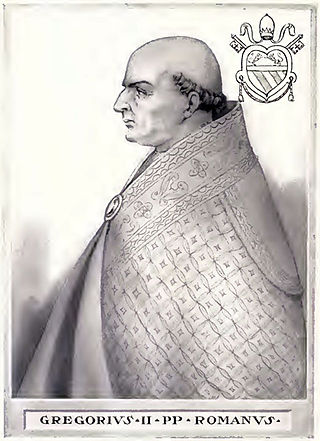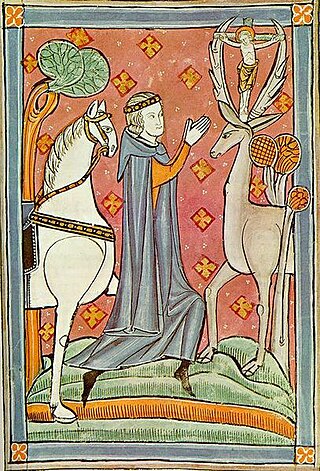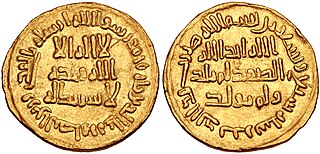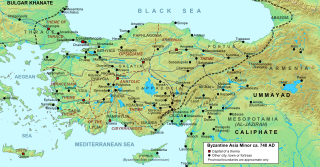
Leo III the Isaurian, also known as the Syrian, was the first Byzantine emperor of the Isaurian dynasty from 717 until his death in 741. He put an end to the Twenty Years' Anarchy, a period of great instability in the Byzantine Empire between 695 and 717, marked by the rapid succession of several emperors to the throne, along with ending the continual defeats and territorial losses the Byzantines had suffered during the 7th century. He also successfully defended the Empire against the invading Umayyads and forbade the veneration of icons.

The 8th century is the period from 701 through 800 (DCCC) in accordance with the Julian Calendar.
The 740s decade ran from January 1, 740, to December 31, 749.
The 720s decade ran from January 1, 720, to December 31, 729.
The 710s decade ran from January 1, 710, to December 31, 719.
The 690s decade ran from January 1, 690, to December 31, 699.

Year 715 (DCCXV) was a common year starting on Tuesday of the Julian calendar. The denomination 715 for this year has been used since the early medieval period, when the Anno Domini calendar era became the prevalent method in Europe for naming years.

Year 727 (DCCXXVII) was a common year starting on Wednesday of the Julian calendar. The denomination 727 for this year has been used since the early medieval period, when the Anno Domini calendar era became the prevalent method in Europe for naming years.

Year 716 (DCCXVI) was a leap year starting on Wednesday of the Julian calendar, the 716th year of the Common Era (CE) and Anno Domini (AD) designations, the 716th year of the 1st millennium, the 16th year of the 8th century, and the 7th year of the 710s decade. The denomination 716 for this year has been used since the early medieval period, when the Anno Domini calendar era became the prevalent method in Europe for naming years.

Theodosius III was Byzantine emperor from c. May 715 to 25 March 717. Before rising to power and seizing the throne of the Byzantine Empire, he was a tax collector in Adramyttium. In 715, the Byzantine navy and the troops of the Opsician Theme, one of the Byzantine provinces, revolted against Emperor Anastasius II, acclaiming the reluctant Theodosius as emperor. Theodosius led his troops to Chrysopolis and then Constantinople, the capital, seizing the city in November 715. Anastasius did not surrender until several months later, accepting exile in a monastery in return for safety. Many themes viewed Theodosius to be a puppet of the troops of the Opsician Theme, and his legitimacy was denied by the Anatolics and the Armeniacs under their respective strategoi (generals) Leo the Isaurian and Artabasdos.
This is an alphabetical index of people, places, things, and concepts related to or originating from the Byzantine Empire. Feel free to add more, and create missing pages. You can track changes to the articles included in this list from here.

Sulayman ibn Abd al-Malik ibn Marwan was the seventh Umayyad caliph, ruling from 715 until his death. He was the son of Caliph Abd al-Malik ibn Marwan (r. 685–705) and Wallada bint al-Abbas. He began his career as governor of Palestine, while his father Abd al-Malik and brother al-Walid I reigned as caliphs. There, the theologian Raja ibn Haywa al-Kindi mentored him, and he forged close ties with Yazid ibn al-Muhallab, a major opponent of al-Hajjaj ibn Yusuf, al-Walid's powerful viceroy of Iraq and the eastern Caliphate. Sulayman resented al-Hajjaj's influence over his brother. As governor, Sulayman founded the city of Ramla and built the White Mosque in it. The new city superseded Lydda as the district capital of Palestine. Lydda was at least partly destroyed and its inhabitants may have been forcibly relocated to Ramla, which developed into an economic hub, became home to many Muslim scholars, and remained the commercial and administrative center of Palestine until the 11th century.
Maslama ibn Abd al-Malik was an Umayyad prince and one of the most prominent Arab generals of the early decades of the 8th century, leading several campaigns against the Byzantine Empire and the Khazar Khaganate. He achieved great fame especially for leading the second and last Arab siege of the Byzantine capital Constantinople.

In 717–718 Constantinople, the capital of the Byzantine Empire, was besieged for the second time by the Muslim Arabs of the Umayyad Caliphate. The campaign marked the culmination of twenty years of attacks and progressive Arab occupation of the Byzantine borderlands, while Byzantine strength was sapped by prolonged internal turmoil. In 716, after years of preparations, the Arabs, led by Maslama ibn Abd al-Malik, invaded Byzantine Asia Minor. The Arabs initially hoped to exploit Byzantine civil strife and made common cause with the general Leo III the Isaurian, who had risen up against Emperor Theodosius III. Leo, however, deceived them and secured the Byzantine throne for himself.

The Battle of Akroinon was fought at Akroinon or Akroinos in Phrygia, on the western edge of the Anatolian plateau, in 740 between an Umayyad Arab army and the Byzantine forces. The Arabs had been conducting regular raids into Anatolia for the past century, and the 740 expedition was the largest in recent decades, consisting of three separate divisions. One division, 20,000 strong under Abdallah al-Battal and al-Malik ibn Shu'aib, was confronted at Akroinon by the Byzantines under the command of Emperor Leo III the Isaurian and his son, the future Constantine V. The battle resulted in a decisive Byzantine victory. Coupled with the Umayyad Caliphate's troubles on other fronts and the internal instability before and after the Abbasid Revolt, this put an end to major Arab incursions into Anatolia for three decades.

The Byzantine Empire was ruled by the Isaurian dynasty from 717 to 802. The Isaurian emperors were successful in defending and consolidating the empire against the caliphates after the onslaught of the early Muslim conquests, but were less successful in Europe, where they suffered setbacks against the Bulgars, had to give up the Exarchate of Ravenna, and lost influence over Italy and the papacy to the growing power of the Franks.
Maria was the empress consort of Leo III the Isaurian of the Byzantine Empire.
al-ʿAbbās ibn al-Walīd ibn ʿAbd al-Malik was an Umayyad prince and general, the eldest son of Caliph al-Walid I. He distinguished himself as a military leader in the Byzantine–Arab Wars of the early 8th century, especially in the Siege of Tyana in 707–708, and was often a partner of his uncle Maslama ibn Abd al-Malik during these campaigns. He or his father are credited for founding the short-lived city of Anjar in modern Lebanon.
Abdallah al-Battal was a Muslim Arab commander in the Arab–Byzantine Wars of the early 8th century, participating in several of the campaigns launched by the Umayyad Caliphate against the Byzantine Empire. Historical facts about his life are sparse, but in Anatolia, a legendary tradition grew around him after his death, and he became a famous figure in Turkish epic literature as Battal Gazi.
Umar ibn Hubayra al-Fazari was a prominent Umayyad general and governor of Iraq, who played an important role in the Qays–Yaman conflict of this period.











